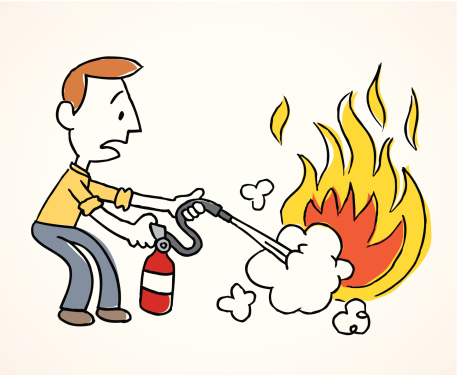One of my work roles is that of Course Leader for the MSc psychotherapy at the University of Brighton, a post I have been in for nearly two years now. Over the past few weeks its been mid-year assessment time, and whilst marking and moderating work can be tiring and requiring much concentration, it is one of the aspects of the teaching role that I really enjoy: its a chance to see how the students are taking in the theory and applying it to their clinical practice with clients.
The MSc students have recently completed a module on Cognitive Behavioural Therapy: or more specifically, as our students are from Humanistic and Psychodynamic counselling backgrounds, how CBT might fit in a relational frame. This is an important module, not only because it helps our students understand the mechanics of CBT at a time when for many members of the public this is the mode of therapy with which they first make contact (CBT remains the GP’s first suggestion for conditions such as anxiety, depression and insomnia); but also because it is important for students to look at other modes of therapy to help them deepen an understanding of their own mode: a critical reflective stance of why therapy works.

I have a lot of respect for the CBT modality, and I think it can have a place in a client’s treatment programme. However, one of my main concerns – and this isn’t exclusive to the use of CBT – is an increase in a ‘pick and mix’ attitude to therapy. Counselling and Psychotherapy is not regulated in the UK, so anyone can call themselves a ‘counsellor’ or a ‘psychotherapist’. I commonly see adverts for ‘therapists’ who have not had BACP or UKCP accredited training, and this worries me. There is nothing to stop a ‘therapist’ picking up and using ideas from CBT or NLP and applying them to a paying client without due consideration to what the underlying cause of distress is. In its worst form, its like a DIY enthusiast when looking at a broken shelf considering whether to use a nail or a screw, which type of raw plug etc…when actually its not about fixing a ‘problem’ but considering the reason the shelf broke in the first place – the underlying structure of the wall. More and more therapists are calling themselves ‘integrative’; and I think there is a danger that people are choosing therapeutic technqies ‘to fix’. Some times this is marketed along the lines of “in working with you, I choose the most appropriate therapy to your problem”. At best, this confuses integrative with eclectic practice; at worst it makes therapy a ‘doing’ activity rather than one where two people in a room learn how to ‘be’ with one another.
The students that performed the best in their assessments were those who were able to consider ‘assimilative integration’ of CBT – this describes psychotherapists who have a theoretical orientation that serves as a foundation, and then consider how other modes might be used consistently with the original mode and frame. For example, the psychodynamic students on our MSc needed to be curious as to how introducing CBT tasks affected the transference (simply put, a phenomenon in psychotherapy in which there is an unconscious redirection of feelings from one person to another, for example a client’s feelings towards a parent are transferred to the therapist) and counter-transference (how the therapist might feel in reaction to the transference). For the humanistic students, consideration needed to be given as to how a mode with an agenda ‘to change’ or ‘correct’ thoughts and behaviour aligns with a respecting of a client’s agency and responsibility. Attending to the students’ presentations reminded me of my own interaction with CBT as a Humanistic practitioner. After all, research has shown that there are certain ‘common factors’ that determine how successful therapy is. Above all, it is the quality of the relationship between client and therapist that determines how effectively the client’s presenting issue is dealt with. And, the therapist needs a consistent frame in which to provide that therapeutic containment.
Very occasionally I still bring some ideas from CBT in to my own practice, and listening to the students present was a useful reminder as to why  (and when) I find value in doing so. To remember that as therapists we need to be aware of any personally held agenda for change – what makes us reach for an intervention rather than sit in the relationship? And being mindful that any attempt to ‘fix’ might lead to first order change which (as I wrote about last week) might re-dress a balance, but might not be sustainable over time. There is nothing wrong with this per se: sometimes there is great value in reducing the flames in order to tackle the root of the fire such can be the case in presentations such as strong anxiety. Indeed, some students argued well for a serial presentation of CBT then a more relational way of working from their psychodynamic or humanistic frame. There can also be value in using paperwork and homework tasks: and for our students this gave them an opportunity to see how their colleagues from the other modality often get to work: for instance, the psychodynamic students noticed how this helped them ‘get alongside’ a client and forge collaboration; whilst the humanistic students were afforded a view on the psychodynamic ‘transitional object’, how a client might remain attached between sessions.
(and when) I find value in doing so. To remember that as therapists we need to be aware of any personally held agenda for change – what makes us reach for an intervention rather than sit in the relationship? And being mindful that any attempt to ‘fix’ might lead to first order change which (as I wrote about last week) might re-dress a balance, but might not be sustainable over time. There is nothing wrong with this per se: sometimes there is great value in reducing the flames in order to tackle the root of the fire such can be the case in presentations such as strong anxiety. Indeed, some students argued well for a serial presentation of CBT then a more relational way of working from their psychodynamic or humanistic frame. There can also be value in using paperwork and homework tasks: and for our students this gave them an opportunity to see how their colleagues from the other modality often get to work: for instance, the psychodynamic students noticed how this helped them ‘get alongside’ a client and forge collaboration; whilst the humanistic students were afforded a view on the psychodynamic ‘transitional object’, how a client might remain attached between sessions.
Above all for me, attending the presentations offered me the opportunity to remember the importance of always remaining a “student” of a profession. In Zen Buddhism this is called “beginners mind”: having an attitude of openness, eagerness, and lack of preconceptions when studying a subject, even when studying at an advanced level, just as a beginner would. I endeavour to remain “unknowing”, allowing my students and my clients to keep on teaching me.
Have you been offered CBT within a more relational ‘talking therapy’? What was your experience? I would love to hear from you.
